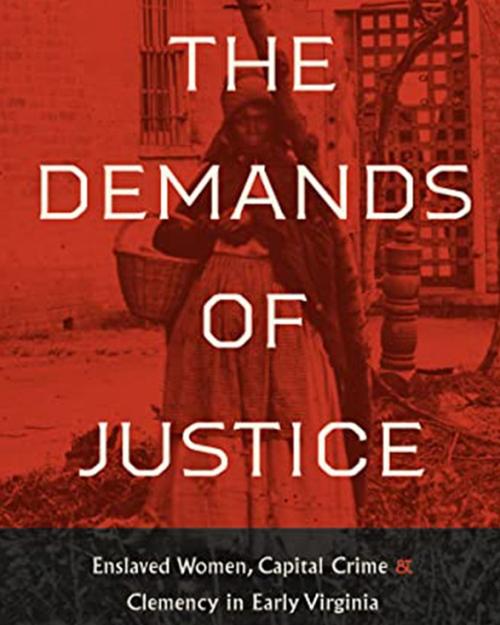The creation of slave laws throughout the antebellum South can be traced back to the legal system in Virginia. By investigating a wide range of documents and records from that era, Tamika Nunley, associate professor of history in the College of Arts and Sciences, shows how enslaved women and girls reckoned with the state’s legal system in her new book, “The Demands of Justice: Enslaved Women, Capital Crime, and Clemency in Early Virginia,” published in April 2023 by the University of North Carolina Press.
From convictions to clemency, Nunely explores the personal stories of Black women who struggled against enslavement and the limited justice that was available to them.
Nunley spoke with the Chronicle about the book.
Question: What was your initial vision for “The Demands of Justice”? Did it change as you did your research?
Answer: I started working with the legal cases in the book for another project some years ago and kept returning to the stories about enslaved women and girls. I wanted to move beyond the fact that they engaged in violent resistance and to think through what these actions might have meant for them and the ways they acted on their own ideas about “right” and “wrong.” Even though slave laws allowed for punishment and violence against enslaved people, I wanted to probe the possible meanings of their actions as a set of ideas that expands the scope of justice as a concept not only defined by lawmakers, but the enslaved.
Q: Why was it important historically to focus on Virginia?
A: Virginia was one of the oldest slaveholding states in the Union and held the largest population of enslaved people. The state also boasts a long lineage of Revolutionary-era political thinkers and an early legal system that many Southern states looked to as inspiration for the creation of slave laws, society and Southern politics.
Q: Your introduction notes that the voices of these women appear “muffled, silenced and between the lines of legal forms, trial records, auditors’ accounts, executive papers, and receipts for transportation and compensation for the loss of property.” How did you overcome the limitations of the archive to build your narrative? What types of sources were of particular help?
A: The documents (auditor’s records, trial records, executive papers, receipts for transportation and compensation) collectively helped me piece together some of the stories along with newspaper articles, pamphlets and secondary literature on early Virginia. Some stories were impossible to tell because county records were later damaged, but I try to underscore moments where there are limitations to what we can know about a particular case.
Q: How did enslaved women accused of capital offenses respond to the legal system as it existed? What forms did their resistance take?
A: The legal system protected the property rights of enslavers which allowed them to purchase, sell, violate and work enslaved people at their discretion. The women and girls in the book violated laws that prohibited them from defending themselves, retaliating against enslavers and exercising their own reproductive autonomy. But just because the law did not allow these actions doesn’t mean that they didn’t challenge these laws through their responses to enslavers. These women registered their ideas about slavery and enslavers through the strategic use of botanical and healing knowledge, infanticide, murder, escape and arson.
Q: Executive “clemency” for these women was not the act of benevolence that the word usually implies. What was the reality?
A: Enslaved women granted “clemency” were sold outside of the state of Virginia, which led to unpredictable circumstances. Because of the violent nature of the accusations against these women and girls, they might also face violent conditions in the place to which they were sold. In addition to facing new and uncertain realities, they were taken away from familial and social networks that were meaningful to them. These were all traumatic outcomes with tremendous consequences for the enslaved women and girls granted “clemency.”
Q: Are there any ways in which this history is echoed in the American criminal justice system of today?
A: Black women continue to challenge the scope and reach of justice in the American legal system. We live in a climate shaped by anti-Black violence, police brutality and diminishing reproductive rights. There are even legal cases currently under consideration that draw upon 19th century slave law. Black people are criminalized at higher rates than the rest of the population of the United States and we have the largest prison population compared to peer nations. There is much work to be done to realize greater equality and a more expansive definition of legal justice. Understanding histories of how the law created conditions of inequality and injustice in the United States is a good first step.
This article originally appeared in the Cornell Chronicle





